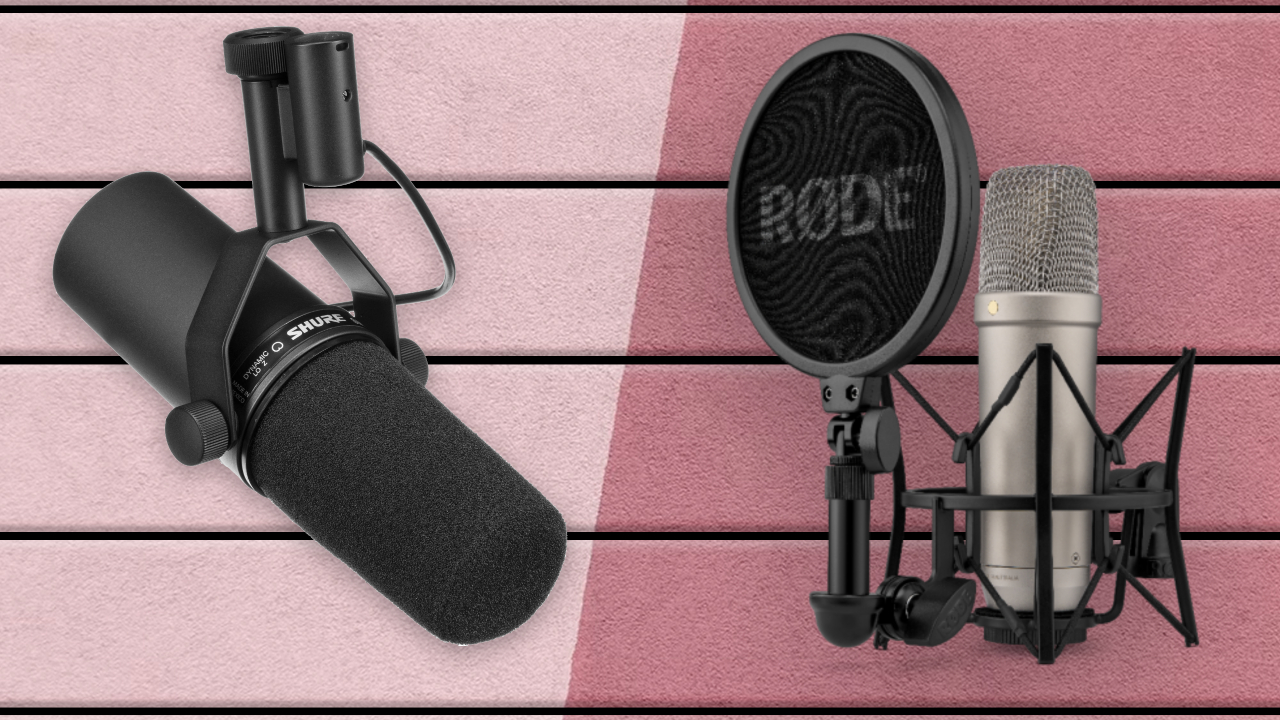
It’s common in any product category for one or two specific models to rise up and become the unspoken go-to. For example, we’d bet there are more podcasts using the Shure SM7B than any other mic around in podcasting. Likewise, we’d wager that the Rode NT1 is among the most popular when it comes to home studio setups, on account of its superior versatility and accessible pricing. Both are excellent recording mics, with clear similarities and differences to each other.
In this article, we’re going to attempt to identify a winner between them, a desert island mic to rule them all. We’ll look at both products’ features and functionality, along with their build quality, and examine how to get the best out of them across a variety of situations.
Shure SM7B vs Rode NT1: At a glance
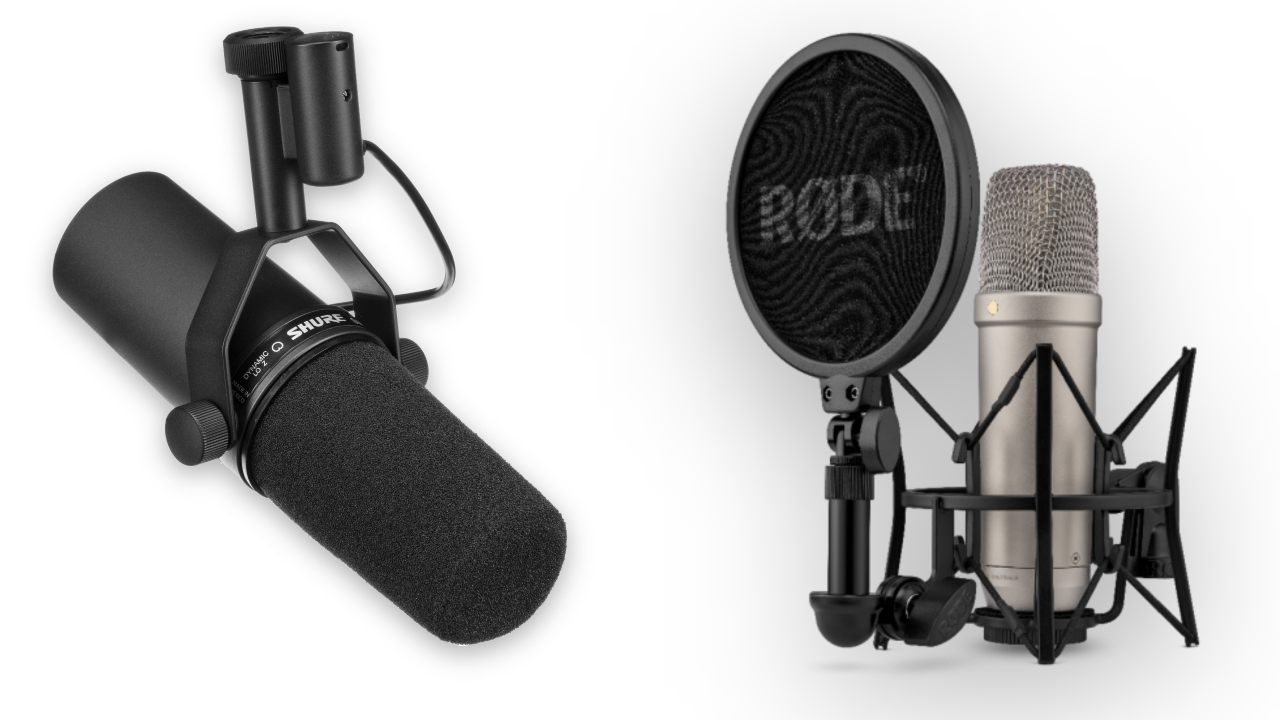
The Shure SM7B will be instantly recognisable, both in its appearance and in its sound, for lovers of podcasts, vlogs and streams. Essentially, it’s a robust, pro-grade dynamic podcasting mic with a focus on capturing the voice in its many forms. It has a relatively narrow frequency response, compared to similarly priced alternatives, although it balances that out with a smoother mid-range which enables it to deliver exceptional results in a broadcast environment. It is, as you’d expect from Shure, extremely well-made and built to last, although it’s rare you’ll see one outside of a studio.
The Rode NT1, on the other hand, is a veteran studio condenser mic which has evolved into something with a great deal more versatility. Where the Shure is an XLR-only mic, the NT1 allows users to connect using either XLR or - in keeping with the current trends - via USB C. Add audio interface capabilities and a wider frequency response and you’ve got something with a great deal more in the way of potential use cases than the Shure. But is it that easy to crown a winner? Of course not. Read on to find out how each mic fares head-to-head.
Shure SM7B
- Price: $399/£439
- Type: Dynamic
- Pickup pattern: Cardioid
- Connectivity: XLR
- Frequency response: 50Hz - 20kHz
- Weight: 765g
- Read full review
Rode NT1
- Price: $269/£249
- Type: Condenser
- Pickup pattern: Cardioid
- Connectivity: XLR, USB C
- Frequency response: 20Hz - 20kHz
- Weight: 308g
- Read full review
Shure SM7B vs Rode NT1: Hardware & features
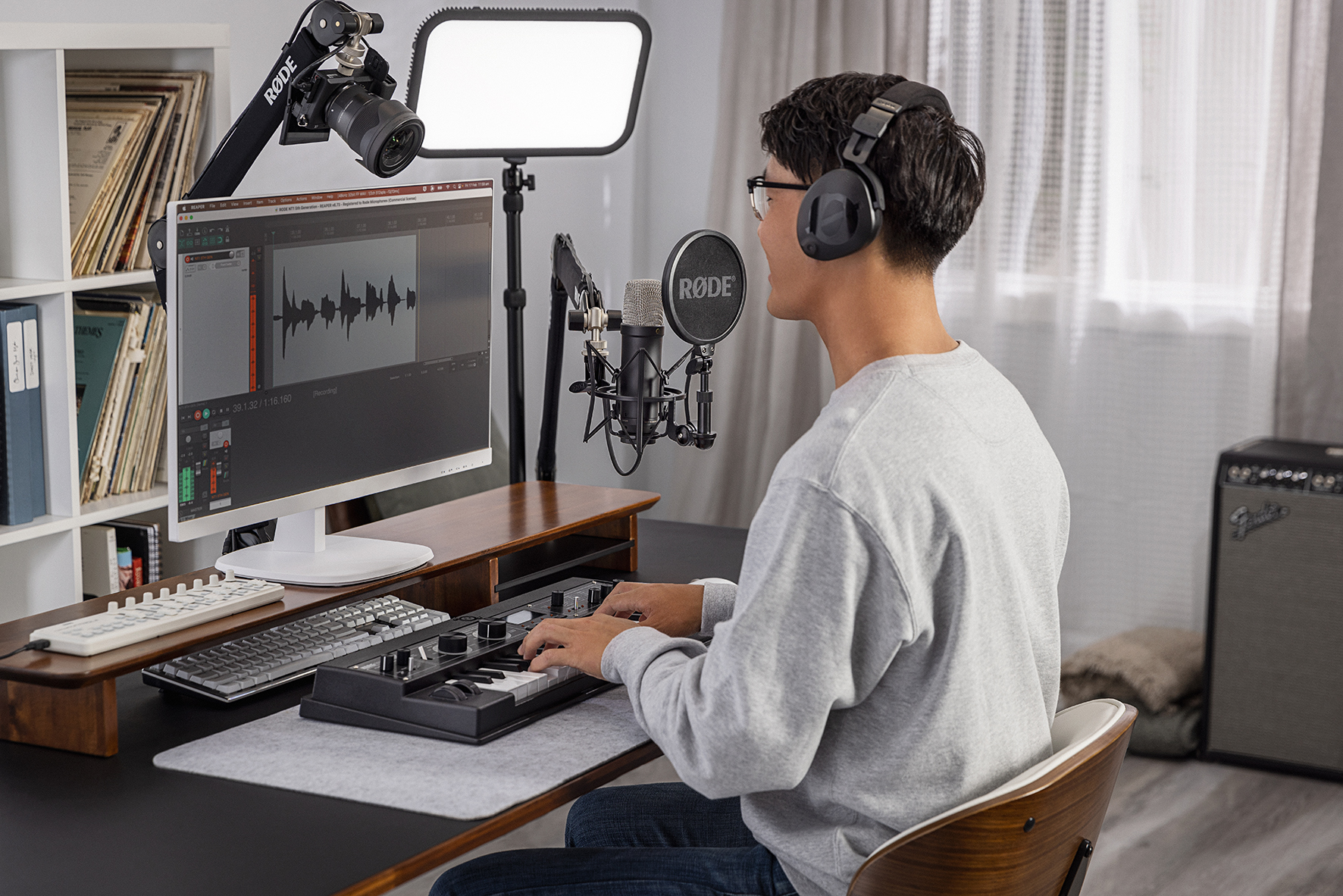
If we’re looking purely at numbers and a spec sheet, it’s hard to see if these two mics are even in competition with each other. The Shure is more expensive, but then has a narrower frequency response and is seemingly geared towards one specific application. The Rode seems keen to impress you with its multiple methods of connectivity and its built-in electronic smarts, but I’ve seen plenty of examples of products that miss out on excellence by trying to do too much.
I like the way the SM7B has some degree of on-mic control, with a basic frequency attenuation to help sculpt your sound before it reaches the interface. It fits in with the mic’s inherent vibe of simplicity; you plug it in, and it sounds great. Simple. The NT1, on the other hand, practically throws the possibilities at you and invites you to shape them to your needs. There’s accompanying software through which you can apply EQ and effects, which is a nice touch, and a general feeling of it being a Swiss Army Knife of a mic, capable across a range of applications although possibly without achieving greatness at any particular one of them.
Winner: On purely features and capabilities, the Rode NT1 is a clear winner. It provides versatility in the way you connect it, and from there offers a wealth of possibilities over how you shape the sound you’re recording.
Shure SM7B vs Rode NT1: Build quality & design
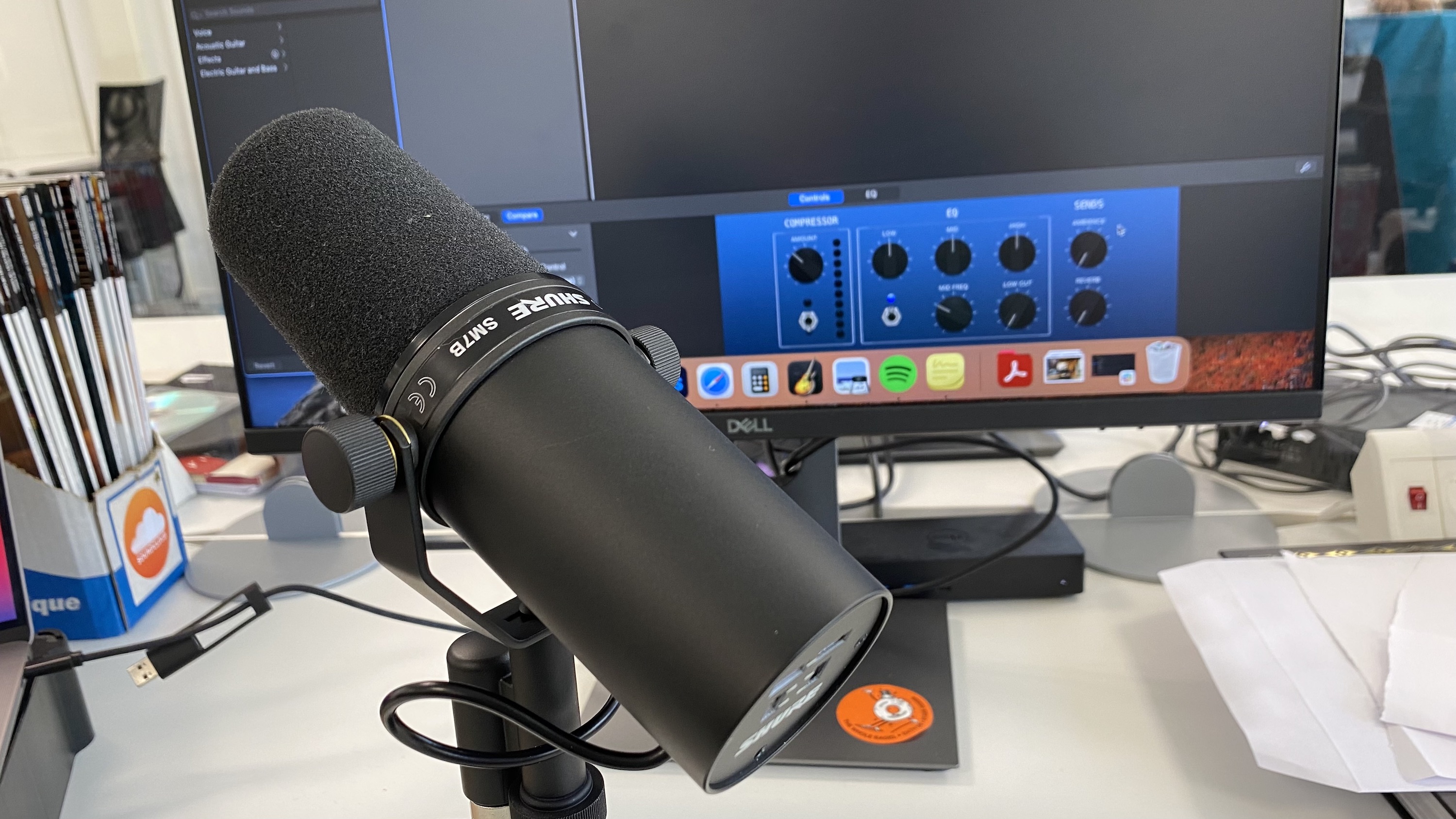
Judging the build quality and design of the Shure SM7B and Rode NT1 is easy because they’re both high-quality, expertly-designed tools which would find use in any studio around the world. The NT1 is now in its fifth iteration, which - if you follow the logic of most consumer technology - means Rode has had time to fine-tune and finesse the design into what we have today, which is a sleek, nicely hefty microphone which balances robustness with an attractive visual aesthetic.
The SM7B, on the other hand, is an example of the opposite theory of industrial design. Rather than gradual iteration, Shure focused on getting it right the first time around, in the same way it has done with its famous SM57 and SM58 mics, which are largely unchanged since they launched in the 1960s. So the SM7B is a weighty - twice the weight of the NT1, in fact - matt black beast of a mic which will probably outlive all of us. There’s even room for a quirk - in the microphone world, anyway - in the way the XLR connection doesn’t actually sit on the mic itself, but rather a separate (but connected) port.
Winner: It’s hard to look beyond the Shure here, on account of its solid build and the fact it basically looks way, way cooler on a boom arm than the Rode.
Shure SM7B vs Rode NT1: Usability
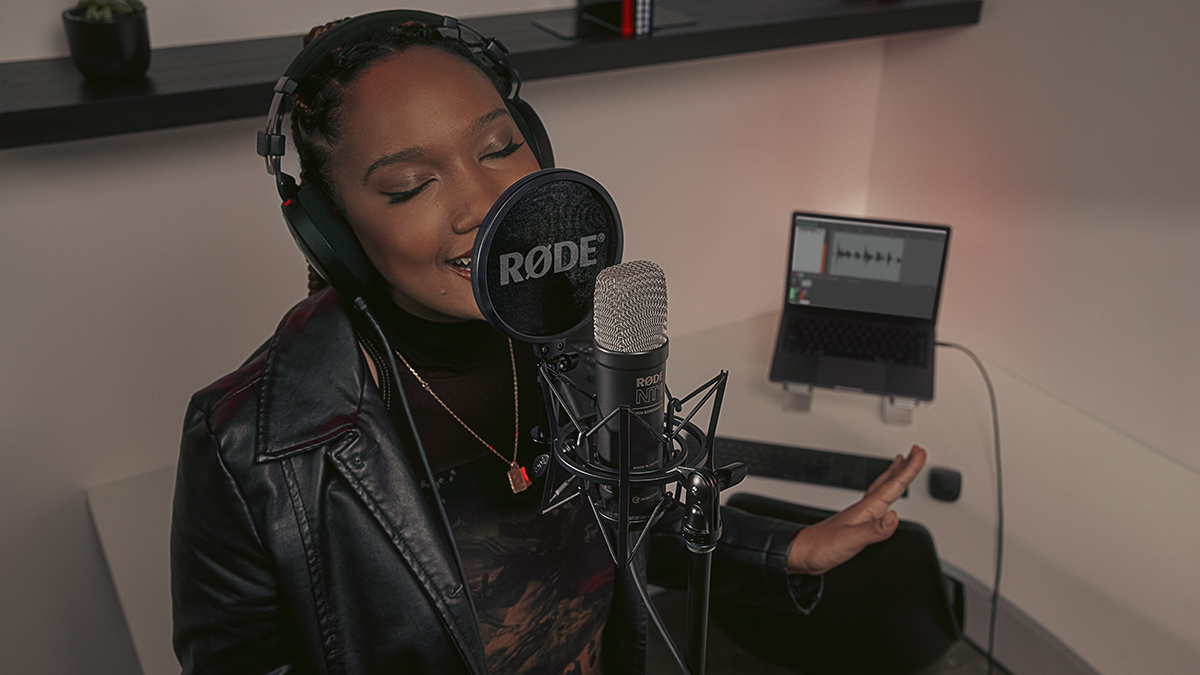
For all that I’ve sung the praises of the Shure and its simplicity, it’s important to say that the Rode, in comparison, is hardly a difficult mic to understand. If you want to use the NT1 in an old-fashioned way, via XLR, then you simply plug it into an audio interface or mixer and away you go.
Being a condenser, the NT1 does require phantom power - the SM7B does not, being a dynamic mic - but that shouldn’t be an issue. And if you then decide you want to access more in the way of the NT1’s digital capabilities, then you can bypass all the external equipment and plug directly into your PC or laptop. From there, if you’ve used recording software before then you’ll have no problems tailoring the NT1 to your specific needs. And even if you aren’t familiar with recording software, I found the app simple and quick to dial in some great-sounding results.
Winner: Both mics are a lesson in simplicity, although for us we’re still drawn to the way the SM7B gets such great results with the absolute minimum of fuss, making it a model of user-friendliness.
Shure SM7B vs Rode NT1: Sounds
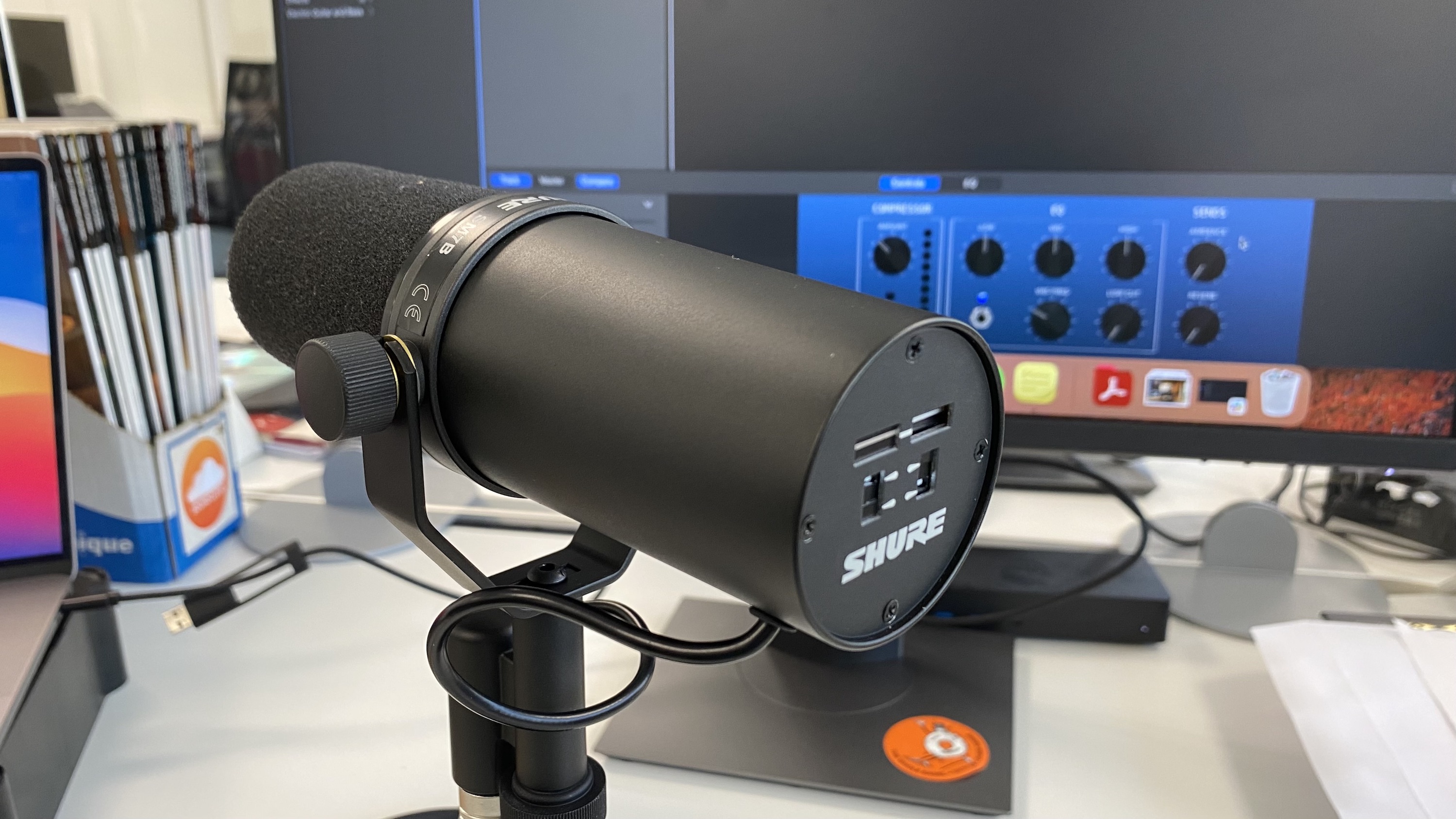
It would be unfair to say the Shure SM7B is, tonally, a one-trick pony. Although that one trick - voice capture - is so far in front of pretty much any other mic on the market, so it’s not a bad trick to have. It achieves those velvety, rich broadcast-quality results thanks to a combination of things, namely the way it manages its frequency response and then its ability to reject external noise.
Put simply, there isn’t a mic I’d choose over it when it comes to podcasting, broadcasting or vlogs. Where it potentially falls down is in the fact that, outside of speech, it possibly wouldn’t be anyone’s first choice for recording instruments. While you could, hypothetically, record a raging tube amp thanks to being a dynamic mic and therefore right at home in front of a loud sound source, we doubt anyone ever would. Or even ever has.
The NT1, however, is undeniably more versatile in the tones it offers. Everything from acoustic guitars to vocals to pianos can all take full advantage of that added sensitivity and wider frequency response to collect some sensational results. Even without the added digital trickery, this is a superb studio mic which covers a lot of ground tonally.
Winner: It might seem like a cop-out but I’m calling this one a draw. The greatness of the Shure’s speech capabilities puts it way out in front on one hand, but the sheer versatility of the NT1 means it’s hard to mark it down.
Shure SM7B vs Rode NT1: Verdict
The more time I spent with the Rode NT1 and the Shure SM7B, the more I thought an article pitting them against each other is doing them both a disservice. Any studio in the world, whether that’s a music studio, a podcast studio, or even a basic home studio, would find a world of uses with both of these wonderful mics. It doesn’t have to be one at the expense of the other.
The Shure SM7B, for example, does one fairly broad thing really, really, really well. Put simply, there’s a reason why so many of the best podcasters use it despite it not having USB connectivity or any form of built-in digital signal processing. The sound that you track into your recording software will require less post-production, meaning fewer plosives and background hums, making life easier and the results better than if you used nearly any other speech mic. But, and it is a big but, you’re not going to use the Shure in front of a 4x12 cab with a stage-volume JCM800 flowing through it. I mean, you could, but Shure already has mics which excel at that, and they cost around a quarter of the SM7B.
The Rode NT1, however, delivers a broader degree of functions and capabilities than the SM7B, and it does so with aplomb. It is, demonstrably, the better studio workhorse. Essentially, if you can afford it, you won’t regret owning both of these mics. If you have to pick one? Ask yourself what you’ll use it for. If it’s to do one thing - capture vocals - outstandingly well, get the Shure. If it’s variety you need, then the NT1 might just be the perfect mic for you.







